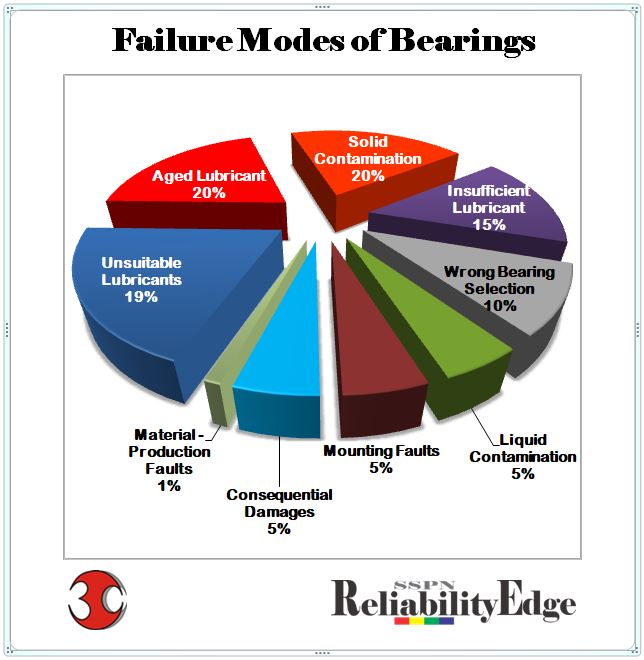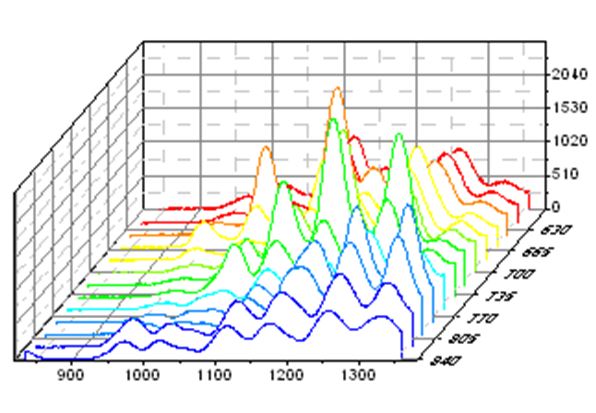Bearings are the most important and common component in most machines. Most of the equipment/ machineries in the world experience downtime due to bearing failures. If we control bearing failures to a minimum, we can control the downtime drastically. The major cause of bearing failure is lubrication failure. Around 80% of bearing failures are due to lubrication failures. It may be due to over lubrication, Insufficient Lubricant, Aged Lubricant, Solid — Liquid Contamination, Unsuitable Lubricant — Spurious Lubricants, etc. The other 20% failure causes include Consequential problems (Misalignment, Vibration, Unbalanced Rotor, Rotor Rub etc), Mounting Faults, Faulty Bearing (Bearing’s Inherent problem) etc.

Now, if we have to improve the reliability of bearings then we should find early signals of these failure modes. That means we should get an early signal, in case of insufficient lubrication or over lubrication. Do you think, monitoring the condition with vibration analysis/ measurement can help us in getting an early signal?
Vibration Analysis or Vibration Measurement is an improper tool for monitoring the condition of bearings.
Let us consider the 80% Lubrication fault Failures & the 20% other than lubrication fault failures
separately, while discussing this topic. 80% of the bearing failures are due to lubrication failures, which will not show in Vibration Analysis or Vibration Measurement until any mechanical damage happens at a later stage due to thermal expansion in the bearing or due to solid contamination. Vibration Analysis or Vibration Measurement gives indications of faults/anomalies at an advanced stage of failure of bearings. The reason we monitor the condition of bearings (CM of Bearings) is to get an early signal before it gets damaged. But Vibration Analysis/measurement gives a signal after the bearing gets damaged.
In the case of the remaining 20% faults, Vibration analysis can give an early signal. Hence, Vibration Analysis can work only for 20% of the failure modes in reality & doesn’t cover 80% of bearing failures modes.
There is a difference between Vibration Analysis and Vibration Measurements. Condition Monitoring by Vibration Analysis is a tedious task. We should get FFT Spectrum of bearing vibration in the bearing frequencies, viz. BPFO, BPFI, FTF, BSF, etc. for each bearing under CM. To get these frequencies, we
should know the number of rolling elements in the bearing, the inner diameter of the outer raceway, and the outer diameter of the inner raceway. Also, we need to collect the Time waveform of the same bearing. Then we should analyze the sidebands at both sides of each of these bearing frequencies. And
then compare all these results with the analysis done at previous dates of CM. Also, we need to maintain a trend of all these FFT Spectrums & time waveform, which is the tedious part of CM. It’s a tedious process, right?
Rather Vibration Analysis can be used to find the exact root cause of the failure of the bearings. We can conclude here, Vibration Analysis is not a better tool for Condition Monitoring of Bearings as compared to Ultrasound Measurements whereas Vibration Analysis is a good tool of Root Cause Analysis of bearing failure at an advance stage.
Ultrasound Measurement is the right tool for bearing’s condition monitoring.
The correct tool to monitor the condition of bearing is Ultrasound Measurement. We can hear the ultrasound and we can record the Peak, RMS values as well as crest factor of ultrasound. We have to maintain the trend of these Peak, RMS values & crest factor. It is a very easy process and we can easily
maintain a trend of the readings of every consecutive record. Ultrasound Measurement gives indications of any fault much early in the bearings, even due to
lubrication faults. It can cover all 100% bearing failure root causes and we can maintain bearing condition, we can improve bearing life, by using Ultrasound Measurement as a CM tool.
If your vendor is doing Condition Monitoring of Bearings by Vibration Analysis, check whether you get the report from your vendor that includes,
1. Vibration Spectrum at BPFO frequency for each bearing
2. Vibration Spectrum at BPFI frequency for each bearing
3. Vibration Spectrum at FTF frequency for each bearing
4. Vibration Spectrum at BSF frequency for each bearing
5. Comparison of these frequencies with previous graphs. (Trend Analysis — Waterfall Chart)
 If you do not get these graphs & comparison of graphs in the waterfall diagram then your vendor is not doing proper condition monitoring of your bearing. Today’s present vendors dealing in condition monitoring are using traditional methods yet because of the knowledge gap. These methods give fruitless results. No actual Asset Management, Reliability Management is practically achieved with these conventional methods. There are new innovations & inventions that have taken place in this Asset Integrity Management field today. Today the asset integrity management field has been upgraded with new innovations & inventions, which can really give effective & productive results in your Asset Management & Maintenance Program.
If you do not get these graphs & comparison of graphs in the waterfall diagram then your vendor is not doing proper condition monitoring of your bearing. Today’s present vendors dealing in condition monitoring are using traditional methods yet because of the knowledge gap. These methods give fruitless results. No actual Asset Management, Reliability Management is practically achieved with these conventional methods. There are new innovations & inventions that have taken place in this Asset Integrity Management field today. Today the asset integrity management field has been upgraded with new innovations & inventions, which can really give effective & productive results in your Asset Management & Maintenance Program.
Now just look at the waterfall diagram in the figure. Can you judge the condition of bearing in such a trend
analysis?
Acoustic Lubrication or Ultrasound Guided Lubrication
It is always recommended to carry Acoustic Lubrication while conducting a CM survey. This will help in taking Corrective Actions immediately after data collection from bearings. Most of the lubrication faults can be corrected in Acoustic lubrication.
Hence, Ultrasound measurement not only helps us in CM of bearings but in immediate Corrective Actions too.
Conclusion:
1. Correct tool of CM of Bearings is Ultrasound Measurements
2. Vibration Analysis is not the right tool for CM of bearings.
3. There should be Spectrums of BPFO/BPFI/FTF/BSF frequencies and a waterfall diagram in a report if
the CM of bearing is done with Vibration analysis.
4. Acoustic Lubrication can be done simultaneously with the CM survey & hence, it is possible to take
corrective actions simultaneously.



